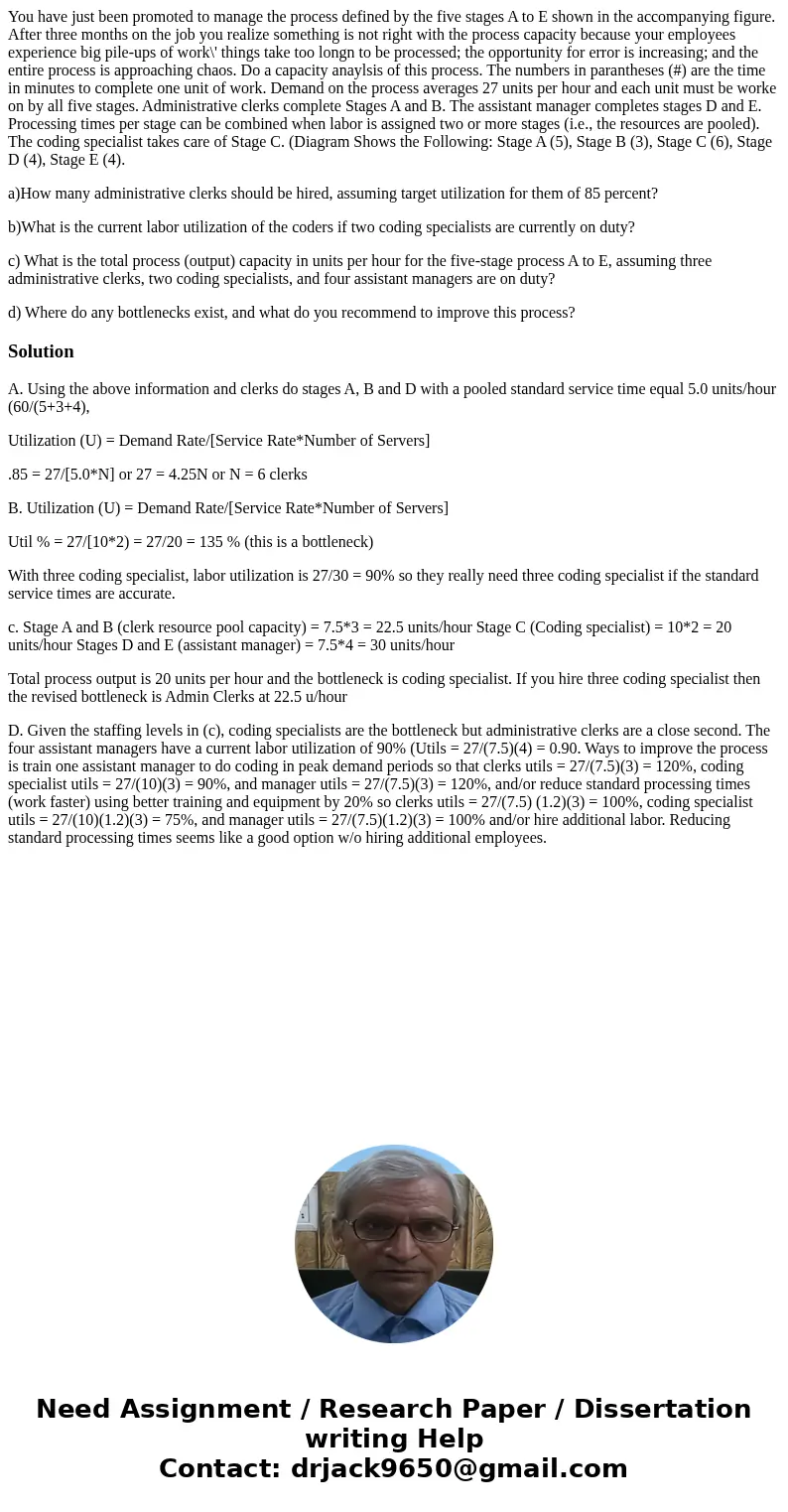You have just been promoted to manage the process defined by
You have just been promoted to manage the process defined by the five stages A to E shown in the accompanying figure. After three months on the job you realize something is not right with the process capacity because your employees experience big pile-ups of work\' things take too longn to be processed; the opportunity for error is increasing; and the entire process is approaching chaos. Do a capacity anaylsis of this process. The numbers in parantheses (#) are the time in minutes to complete one unit of work. Demand on the process averages 27 units per hour and each unit must be worke on by all five stages. Administrative clerks complete Stages A and B. The assistant manager completes stages D and E. Processing times per stage can be combined when labor is assigned two or more stages (i.e., the resources are pooled). The coding specialist takes care of Stage C. (Diagram Shows the Following: Stage A (5), Stage B (3), Stage C (6), Stage D (4), Stage E (4).
a)How many administrative clerks should be hired, assuming target utilization for them of 85 percent?
b)What is the current labor utilization of the coders if two coding specialists are currently on duty?
c) What is the total process (output) capacity in units per hour for the five-stage process A to E, assuming three administrative clerks, two coding specialists, and four assistant managers are on duty?
d) Where do any bottlenecks exist, and what do you recommend to improve this process?
Solution
A. Using the above information and clerks do stages A, B and D with a pooled standard service time equal 5.0 units/hour (60/(5+3+4),
Utilization (U) = Demand Rate/[Service Rate*Number of Servers]
.85 = 27/[5.0*N] or 27 = 4.25N or N = 6 clerks
B. Utilization (U) = Demand Rate/[Service Rate*Number of Servers]
Util % = 27/[10*2) = 27/20 = 135 % (this is a bottleneck)
With three coding specialist, labor utilization is 27/30 = 90% so they really need three coding specialist if the standard service times are accurate.
c. Stage A and B (clerk resource pool capacity) = 7.5*3 = 22.5 units/hour Stage C (Coding specialist) = 10*2 = 20 units/hour Stages D and E (assistant manager) = 7.5*4 = 30 units/hour
Total process output is 20 units per hour and the bottleneck is coding specialist. If you hire three coding specialist then the revised bottleneck is Admin Clerks at 22.5 u/hour
D. Given the staffing levels in (c), coding specialists are the bottleneck but administrative clerks are a close second. The four assistant managers have a current labor utilization of 90% (Utils = 27/(7.5)(4) = 0.90. Ways to improve the process is train one assistant manager to do coding in peak demand periods so that clerks utils = 27/(7.5)(3) = 120%, coding specialist utils = 27/(10)(3) = 90%, and manager utils = 27/(7.5)(3) = 120%, and/or reduce standard processing times (work faster) using better training and equipment by 20% so clerks utils = 27/(7.5) (1.2)(3) = 100%, coding specialist utils = 27/(10)(1.2)(3) = 75%, and manager utils = 27/(7.5)(1.2)(3) = 100% and/or hire additional labor. Reducing standard processing times seems like a good option w/o hiring additional employees.

 Homework Sourse
Homework Sourse